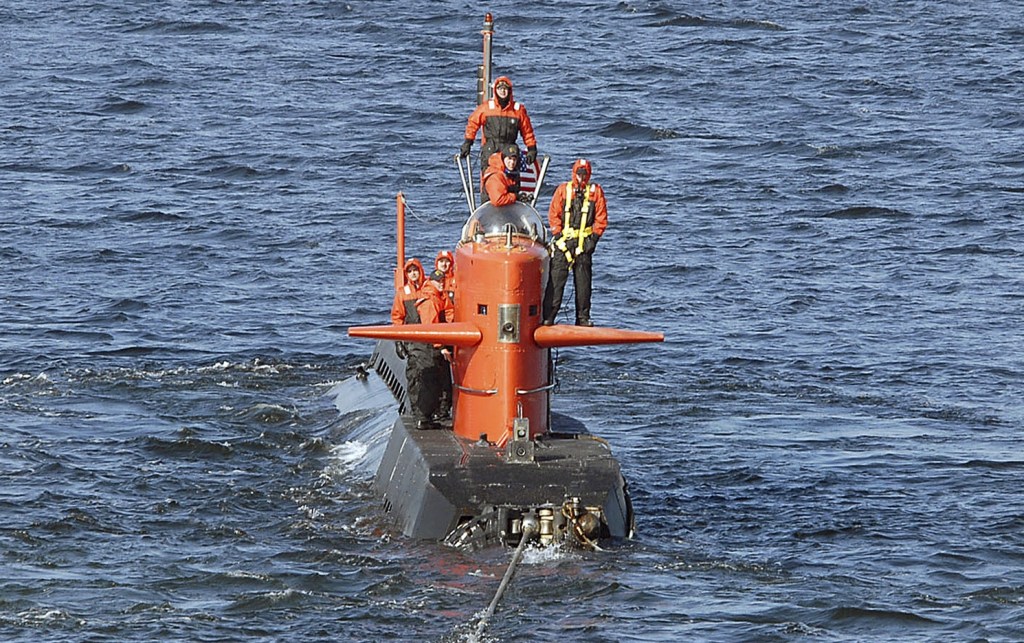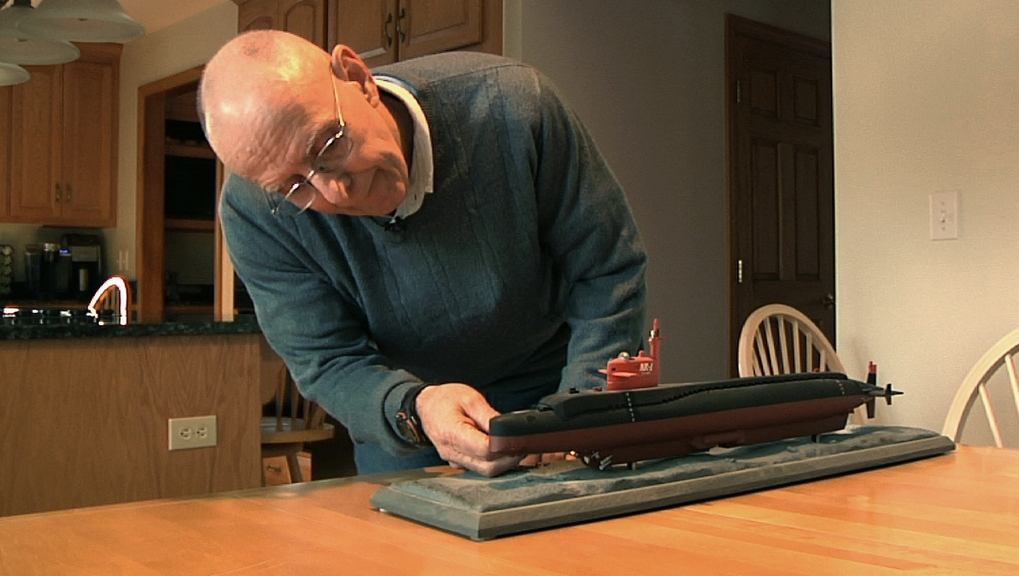GROTON, Conn. — It could dive deeper than any other submarine, and when it reached the ocean floor, the one-of-a-kind Navy vessel could roll on wheels with lights illuminating the depths outside its windows.
The nuclear-powered NR-1, launched in Groton in 1969, was one of the most secretive vessels in the U.S. undersea force. It was taken out of service in 2008 and disassembled. Now the Navy has collected pieces of it for an exhibit at a submarine museum in Groton, where it was based for the duration of its service life.
It was known primarily as a research vessel, but it also carried out a range of military missions that remain under wraps even today. Veterans who served aboard the tiny sub during the Cold War say that it was one of the most fascinating assignments of their careers — but that not even their wives know all the details.
Toby Warson, who served as commander from 1970-73, said he once led the sub on a hazardous military operation in the Mediterranean. The mission, code-named “Raccoon Hook,” earned him a distinguished service medal, he said, but he has had to keep the details to himself.
“I finally had to quit wearing the ribbon because when I walked into the officers’ club, everyone asked how I got it, and I couldn’t tell them,” said Warson, who lives in Camas, Wash. “They thought I was being cute. I wasn’t being cute. I just didn’t want to go to jail.”
The missions that have been declassified include work on an undersea submarine-detection network, mapping of the ocean floor, and the salvage of parts of the space shuttle Challenger, which exploded over the Atlantic in 1986.
The 140-foot-long submarine — a pet project of Adm. Hyman Rickover, the father of the nuclear Navy — was powered by a custom-built miniature nuclear reactor and could dive to 3,000 feet. The crew of about 10 men could stay at sea for as long as a month, but they had only frozen TV dinners to eat, bathed once a week with a bucket of water and burned chlorate candles to produce oxygen.
The sub was so slow that it was towed to sea by a surface vessel, and so tiny that the crew felt the push and pull of the ocean’s currents.
“Everybody on NR-1 got sick,” said Allison J. Holifield, who commanded the sub in the mid-1970s. “It was only a matter of whether you were throwing up or not throwing up.”
It carried no weapons, but it had unmatched capabilities. In an era when submarine crews tapped undersea cables and deployed with spies in a cat-and-mouse game with the Soviet fleet, NR-1 set itself apart with a narrow, deep-diving hull and a retractable arm with a claw that could grab objects on the ocean floor.
Retired officers who served on NR-1 during the Cold War said as many as half its missions were of a military nature. The Navy’s History and Heritage Command in Washington and submarine force headquarters in Norfolk, Va., said they searched but could not find mission records requested by The Associated Press, and the veterans say they have to assume details remain classified until they are told otherwise.
In the Navy’s “silent service,” every submarine operates in secrecy, but Rickover protected his NR-1 in particular by sharing details of its development and capabilities on a need-to-know basis. The cloak was pulled back by publicity of exploits including a 1976 mission to recover an F-14 fighter with a newly developed missile that had rolled off the deck of an aircraft carrier.
Rickover envisioned multiple submarines like NR-1, but the cost got in the way. In today’s Navy, unmanned submarines have come so far that the sub force commander, Vice Adm. Michael Connor, said they could carry out operations that once might have gone to NR-1.
“That’s the type of thing that an unmanned vehicle can do much more efficiently than designing a new class of submarine for that specific mission,” Connor said in an interview. “That’s a prime example of how we leverage things like unmanned vehicles.”
Michael Riegel, a former commander of the Groton base who also served as an officer aboard NR-1 in the 1970s, said he would expect a range of reactions if and when all the submarine’s secrets are revealed.
“Some will probably say âGee, that wasn’t out of the ordinary,'” he said. “Some will say âGee, that was really slick what they did.’ “
Send questions/comments to the editors.





Success. Please wait for the page to reload. If the page does not reload within 5 seconds, please refresh the page.
Enter your email and password to access comments.
Hi, to comment on stories you must . This profile is in addition to your subscription and website login.
Already have a commenting profile? .
Invalid username/password.
Please check your email to confirm and complete your registration.
Only subscribers are eligible to post comments. Please subscribe or login first for digital access. Here’s why.
Use the form below to reset your password. When you've submitted your account email, we will send an email with a reset code.